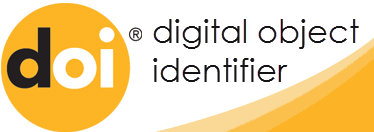CONCEPTUAL FOUNDATIONS OF USING INTERACTIVE METHODS IN TEACHING THE COURSE “HUMAN AND ANIMAL PHYSIOLOGY”
Keywords:
interactive learning, physiology course, constructivist approach, competency-based model, student-centered learning, didactic functions, brainstorming, case study, role-playing, analytical thinking, higher education, innovative methodology.Abstract
This article analyzes the theoretical and practical foundations of using interactive teaching methods in higher education for the course “Human and Animal Physiology.” The content of interactive methods, their distinctions from traditional approaches, and their connection with modern pedagogical strategies are examined. The didactic functions of interactive methods are explored based on the complex structure and theoretical-practical directions of the course. Examples of integrating methods such as “cluster,” “insert,” “brainstorming,” “role-playing,” and “case study” into lessons are provided. As a result, these methods have been shown to facilitate the integration of theoretical knowledge with practical skills, foster independent thinking, and promote creative reasoning among students.
References
Jonassen, D.H. (1999). Designing Constructivist Learning Environments.
Vygotsky, L.S. (1978). Mind in Society: The Development of Higher Psychological Processes.
Osborn, A. (1953). Applied Imagination: Principles and Procedures of Creative Problem Solving.
Brookfield, S. & Preskill, S. (2005). Discussion as a Way of Teaching.
Kolb, D.A. (1984). Experiential Learning: Experience as the Source of Learning and Development.
Dewey, J. (1938). Experience and Education.
Biggs, J. (2003). Teaching for Quality Learning at University.
Bonwell, C.C. & Eison, J.A. (1991). Active Learning: Creating Excitement in the Classroom.
Piaget, J. (1970). Science of Education and the Psychology of the Child.
Hymes, D. (1972). Communicative Competence.
Weimer, M. (2013). Learner-Centered Teaching: Five Key Changes to Practice.
Freeman, S. et al. (2014). “Active learning increases student performance in science, engineering, and mathematics.” PNAS, 111(23): 8410–8415.
Bloom, B.S. (1956). Taxonomy of Educational Objectives: The Classification of Educational Goals. New York: Longman.
Anderson, L.W., & Krathwohl, D.R. (2001). A Taxonomy for Learning, Teaching, and Assessing: A Revision of Bloom’s Taxonomy of Educational Objectives. New York: Addison Wesley Longman.
Bransford, J., Brown, A., & Cocking, R. (2000). How People Learn: Brain, Mind, Experience, and School. Washington D.C.: National Academy Press.
Johnson, D.W., Johnson, R.T., & Smith, K.A. (2014). Cooperative Learning: Improving University Instruction by Basing Practice on Validated Theory. Journal on Excellence in College Teaching.
Slavin, R.E. (2011). Cooperative Learning: Theory, Research, and Practice. Boston: Allyn & Bacon.
Prince, M. (2004). Does Active Learning Work? A Review of the Research. Journal of Engineering Education, 93(3), 223-231.








